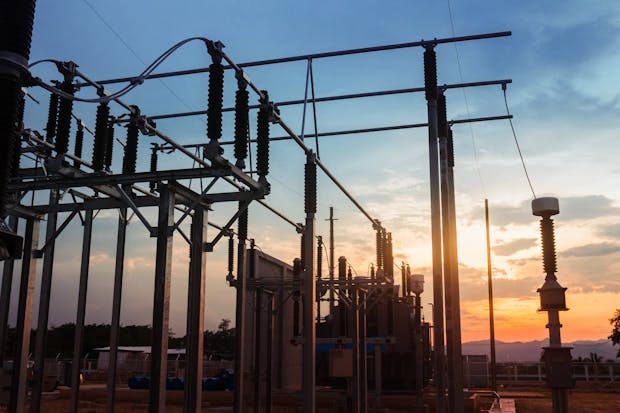the power crisis explained

the power crisis explained
the power crisis explained
India has spent the past couple of weeks or so with the lingering doubt of whether the lights are about to go out. this is largely due to a shortage of coal at power plants because of a domestic supply crunch and rising cost of coal imports. but the real issue appears to be a lack of planning and supply chain management rather than a shortage of the fossil fuel itself.
so what happened?
India has a total installed power generation capacity of 388 gigawatts, out of which 202 gigawatts is purely coal-based. the peak power demand in the country was 200 gigawatts on July 7 and was easily met by the production capacity. but now it is grappling with an acute shortage of coal at the power plants.
when it rains it pours
part of it is due to a quicker-than-expected bounceback in demand post the Covid-related disruption. India consumed 124 billion units of power in August 2021, significantly higher than the 106 billion units in pre-pandemic August 2019. at the same time, the nation’s reliance on coal-powered plants has grown from 61.9% to 66.4%. so its really important.
however, heavy rains have dampened mining activities, and put a spanner in the transport of coal, whose average daily rakes loaded fell from 243.4 in April to 210.8 in August.
further, India typically sees a rise in demand in the August-to-October period, and despite 2019 and 2020 being exceptions, 2021 was no different. this meant coal reserves at the power plants were depleted at faster rates
power centres
what seems to have exacerbated the issue is states’ failure to plan for the usual trend and certain delays in clearing their dues to Coal India, which supplies over 80% of the country’s coal. thus, despite Coal India (and others) increasing their production over the April-to-September period from 267 million tonnes in 2019 to 307.4 million tonnes this year, India finds itself in a crunch.
this meant an opportunity for other power generators, especially private ones, to step in and cover the gap. but at rates that followed the simple economic principle of supply and demand. prices more than tripled from ₹4.4/unit in September to ₹16.5/unit last week, and contributed greatly to the surge in stock prices mentioned above.
many state power corporations, from Punjab’s to UP’s to Gujarat’s were forced to buy lakhs of units off the open market at these electrifying prices. so it wouldn’t quite be a surprise if their residents find surge pricing applied to their electricity bills. then the centre finally stepped in to ask Coal India to further ramp up production, and increased the limit for the sale of coal from ‘captive’ mines to 50% of output.
clean switch
at the same time, perhaps in unrelated developments or maybe not, India’s big guns seem to be making big moves in the renewable energy sector. currently, wind, solar, and other forms of renewable energy production form less than 10% of India’s installed capacity. but that looks set to steadily increase.
Mukesh Ambani is acting on his ambition to make India the world’s largest green hydrogen-producer and bring down its cost to $1/kg within a decade. Reliance unit, Reliance New Energy Solar Ltd., has signed an agreement with Danish Steisdal to bring the latter’s hydrogen electrolyzers to India. it has also made a $29 million investment in a German solar-based wafer manufacturer, NexWafe GmbH. it also signed an agreement with Shapoorji Pallonji to acquire a 40% stake in Sterling and Wilson Solar for $370 million. these, and others, are part of Reliance’s commitment to invest $10 billion in the sector over the next three years.
of course, the Adani Group isn’t far behind. it aims to triple the share of renewable power generation in its total capacity from the present 21% to 63%. it wants to make Adani Ports a net-zero carbon emitter by 2025 and power all data centres with renewable energy by 2030. it has also said that it will spend 75% of its planned capital expenditure until 2025 on green technologies. it has also made a big splash with the largest acquisition in India’s renewable energy sector with the $3.5-billion purchase of SB Energy India, a joint venture between SoftBank and Bharti (yes, of Airtel).
in fact it has been a tremendous year for renewable energy funding in India, with April-to-July raking in $6.6 billion. this is greater than the $6.4 billion raised across all of FY21, and on track to beat FY20’s amount of $8.4 billion. perhaps in a few decades, power generation in India won’t feel like running across a bed of hot coal.
what now?
for now, stocks of power suppliers look set for a positive run. on October 11, the stock price of Tata Power was at ₹191/share. two weeks later, it was trading at ₹215/share. it wasn’t the only stock in the sector to have surged over the period either. others like Torrent Power, Inox Wind, Suzlon Energy, ABB Power, JP Power also recorded flash gains.
India has managed to procure extremely expensive coal, some of it from warehouses in China, to plug demand. these costs are going to be passed on to customers. so most of India will see high electricity bills. this will have many cascading effects: from increasing the price of goods to larger retail electricity bills. expect more inflation headlines soon.



